Greetings, fellow people who are out of cards! I've convince Flux to write an article for this site in regards to what became quickly one of my favourite games, Mythgard. With the expansion and full game launch around the corner, I decided this is the perfect time to write this piece.
In this article, I'm going to present 6 mechanics that I would love to see in the game at some point, while also explaining how I'd implement them in Mythgard when necessary, and end with an example of a card(s) using that mechanic. Now, the list is ordered as a countdown, but they're really in no particular order. I've pulled from 5 other card games, with varying degrees of popularity, what I found to be the most interesting keywords that I feel would enhance Mythgard's experience.
Without further ado, let's get started!
Welcome to the World of Mythgard
Ok, I lied, there is an ado. I'm actually going to go over the mechanics of Mythgard very briefly since some of you may not be familiar with the game. I have more in-depth guides on the Mythgard Forum that you should definitely check out (#ShamelessPlug).
The game plays much like a typical CCG. You and your opponent have a number of life points and a deck of cards that you use to summon minions and cast spells in order to punch your opponent in the face until their life points reach 0. It even has a Power system that's very similar to Hearthstone's, although you are not limited by what colors your deck is when using them.
- The cards are split among 6 colors - Blue, Yellow, Red, Green, Orange and Purple.
- Cards are usually 1 color, though dual-color cards exist.
- No restrictions are placed on how you can mix and match the colors of cards.
The game also has a graveyard system, called the Boneyard.
There are three major mechanics that set Mythgard apart from the other CCGs on the market: the way you gain resources, the lane system, and Paths.
Resources
The resource system is very interesting. In order to gain mana, you Burn a card. To do that, you drag it towards the bottom of the screen. When a card is Burned, you gain 1 mana and 1 gem of that card's color (I'll get back to gems in a minute), and the card is shuffled into your deck. You can't Burn a card twice, and such cards have a distinct visual indicator when they are Burned, so you'll know if you've done so already.
Lanes
The lane system is what makes combat in Mythgard engaging while maintaining a steady game flow in the digital space. In short, the board is split into 7 lanes, and each player can play 1 minion in each lane. A minion can attack any of the 3 lanes directly in front of it, or it can move to any adjacent lane. If none of the 3 lanes is occupied by an enemy minion, attacking any of them will damage the enemy player. If there are minions in those lanes, you must attack one of them. There are keywords that let you break all of those rules, but this is the gist of it.
Paths
Finally, Paths are passive effects that augment the deck you play, give you extra life points at the start of the match, and each has a Pursuit effect that gives you an edge if you go second. There are 5 of them, with a 6th coming with the expansion, and are a little too complex to get into here. I have a Path guide where you can check them out in more detail.
Decks need to have at least 40 cards, which come in 4 rarities, and the rarer the card is, the fewer copies of it you can have in your deck: Common (4 copies in your deck), Uncommon (3 copies), Rare (2 copies) and Mythic (1 copy). You can see the rarity in the top-right corner of the card, and it's cost in the top-left. Let's take a look at the 5 different types of cards found in Mythgard:
Minions
Minions have strength and health. This is what you use to hit the opponent in the face. When it’s summoned, it has summoning sickness, and it’s health doesn’t regenerate after battle. When it dies, it goes to the Boneyard.
Spells
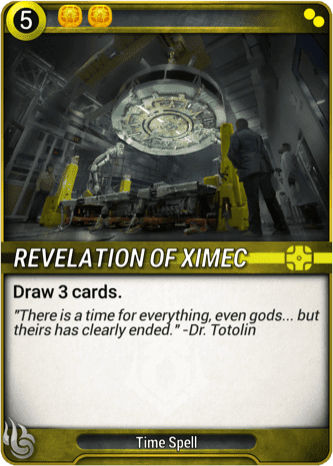
You cast the card, its effect is activated, then it’s sent to the Boneyard.
Enchantments
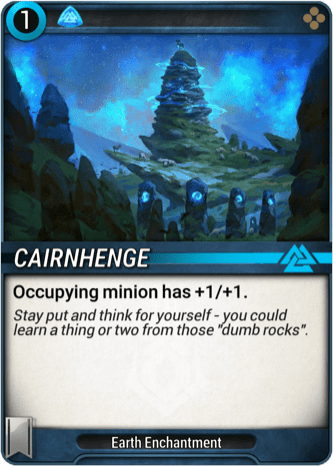
They work a bit differently in Mythgard. Instead of enchanting minions, you enchant the lanes. Then, when a minion occupies that lane, it gets the bonus written on the card. You can’t replace an Enchantment with another unless otherwise stated, in which case they go to the Boneyard.
Artifacts
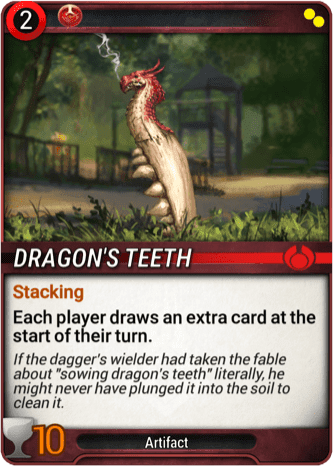
They have their own special space where you place them, next to your portrait (similar to Quests and Secrets in Hearthstone), and they offer passive or active effects. When your opponent deals damage to you, the last Artifact played loses that much durability and will be destroyed if it reaches zero. You can have up to 5 of them in play at once, but some of them, like the one here, can stack, occupying less space. Unlike Enchantments, you can destroy an Artifact if you have 5 in play, at which point it goes to the Boneyard.
Items
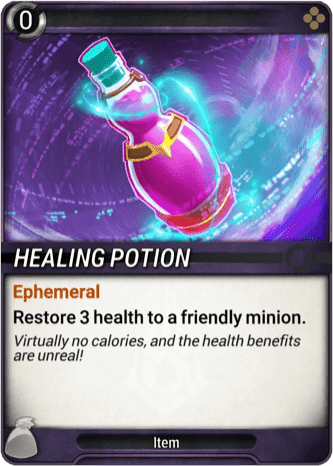
They work similarly to spells, except they’re non-collectible, can only be obtained via effects, don’t require Gems to be played, and are Ephemeral (see below for more on the last two). Most items can be found in Purple.
If you look at most cards, they have one or more symbols next to their cost. Those symbols DO NOT represent mana. They are Gems, a secondary resource obtained when you Burn a card. The color of the Gem is dictated by the ring around the mana cost, but you can tell what it is from the symbol next to the card's name. If the ring is broken, like with the Healing Potion Item, it means the card can't be Burnt.
Speaking of the Item, you can see it has the Ephemeral keyword. A card with Ephemeral will be banished from the game (it goes poof, you can't get it back) if it's sent to the Boneyard, shuffled into your deck, or, if it's in play, returned to your hand. Most effects that return cards from your Boneyard also give them Ephemeral. This is a great tool for preventing infinite loops or the ability to resummon the same powerful creature again and again (looking at you, PRIEST!). As a rule of thumb, if a card didn't start in your deck, it is both unburnable and Ephemeral.
Finally, I'll very briefly talk about the setting of the game. It can be described in 8 words: Post-Apocalyptic Cyberpunk Mythological Urban Fantasy… with a Gundam. If you're familiar with Shadowrun, it's similar to that, except everything is cranked up to 11. The newest expansion centers around the 21th Pantheon Games, a giant sporting event that all the factions in the game participate in. Not exactly sure why they decided to go with this theme, it's not like anything like that happened in real life for it to be relevant /s.
What was I doing here…? Oh, yeah, mechanics I want to see in the game! Let's get into them!
Evolution of the Fittest
Let's kick things off with the card game that got me into card games: Duel Masters. I won't explain the entire gameplay loop, since it's not relevant, but it is pretty similar to a typical CCG: you generate mana, you summon creatures, you hit your opponent in the face until you win. That said, it is important to understand the power curve (in a nutshell, how strong a card is relative to its cost) of the game to better grasp our first mechanic: Evolution. As such, say hello to Vorg:
He is a vanilla card and representative of the power curve of when he was printed. As you can see, you get 2000 power for 2 mana (ignore the upside-down 1), meaning that for X mana a typical creature would have X times 1000 power. In Duel Masters, when 2 creatures fight, the one with more power kills the one with less, so it's obviously better to have more power. Now, let's take a look at an evolution creature:
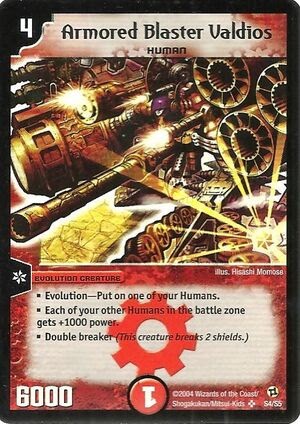
This is Valdios, a 4 mana 6000 power that gives +1000 power to your other Humans (Ignore "Double Breaker"). Oh, and because it's an Evolution creature, it can attack as soon as it's summoned, unlike a regular creature. The Hearthstone equivalent would be a 4 mana 6/7 with Charge that gives +1/+1 to minions of the same type.
So how is something like this so above the curve? Well, it comes down to how Evolution creatures work: In order to summon one such creature, you must put it on top of another one that has the specified requirements, in this case, being a Human. This means that you need to already have the specified creature in play AND you don't actually increase the number of creatures on your side of the board.
Now, the way this would work in Mythgard is quite simple: Just transform one of your existing minions into the Evolved one when you put it on top of it. Transformation doesn't remove the ability to attack, so if you have a, say, Canine on board with 1 attack, and you Evolve it into one with 6 attack, you can still trade or go face with it. Flavour-wise, I'd make it so that most Evolution minions are actually gods and other powerful beings, who take over a mortal body and fight in their place. I'd also change the name, though I'm not sure to what. The most obvious is 'Avatar', but that is a minion type, so it'd be confusing. Maybe Ascension? Here's an example:
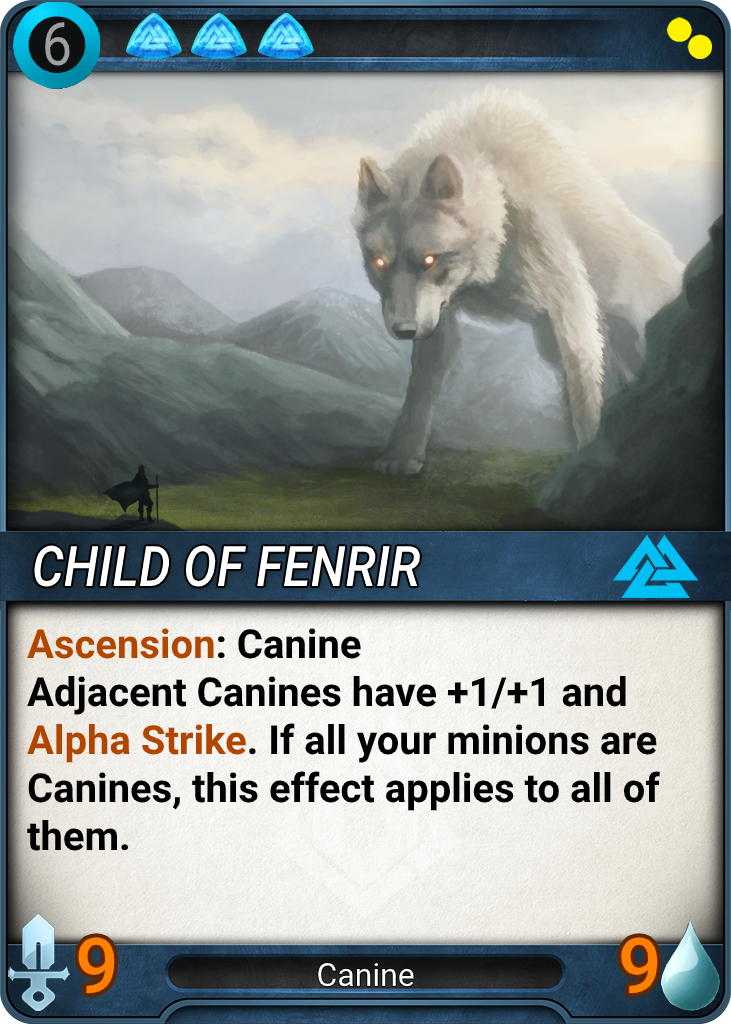
In order to play this, you'd have to put it on top of a Canine already on the board, at which point it is transformed into 'Child of Fenrir'. From there on, it is treated like any other minion. I may have gone a bit overboard with this one, though…
Glossary:
Alpha Strike - Minions with Alpha Strike deal combat damage before minions without it. If the Alpha Strike minion deals enough damage to kill a minion without Alpha Strike, the opposing minion will not get to strike in retaliation.
Shatter Them Into Slivers
Time to come clean: I don't like Magic the Gathering. My experience with the game is limited to a few matches in Online and Arena, and I've never even touched a Magic card before, but I didn't really enjoyed what I played. Maybe I'd have a different opinion on the game if I played in person, but at the time of writing this article there's a… thing… happening in the world that prevents it.
That doesn't mean I can't recognize some good mechanics. In fact, given how old this game is (two years older than I am), there's probably enough mechanics in it for 6 more lists like this one. But for now, I'm limiting it to one, and while I said this list is in no particular order, if I had to choose only one mechanic to introduce to Mythgard, it'd be Slivers. To understand how they work, let's take a look at a few cards:
Now, as I said, I don’t play Magic, but at first glance, these cards seem to be quite overcosted. All of them are 3 mana for a 2/2 for an additional effect. Where this archetype really shines is in the fact that Slivers share their abilities amongst each-other. Each one of the cards here is a 2/2 with trample, first strike and each needs to be blocked by at least two creatures. All you need is another Sliver that gives some attack, and you have a board that is invincible in Combat.
Slivers can be pretty much translated 1 to 1 in Mythgard, at least mechanically. For theming, I’m actually going to use the term used in Duel Masters: Survivors. This works great in Mythgard, as you have a group of people who survived Ragnarok by working together and sharing their skills with each other, and continue to do so to this day. Survivor minions have the Survivor tag in addition to their other ones. Here are some examples of Survivors:
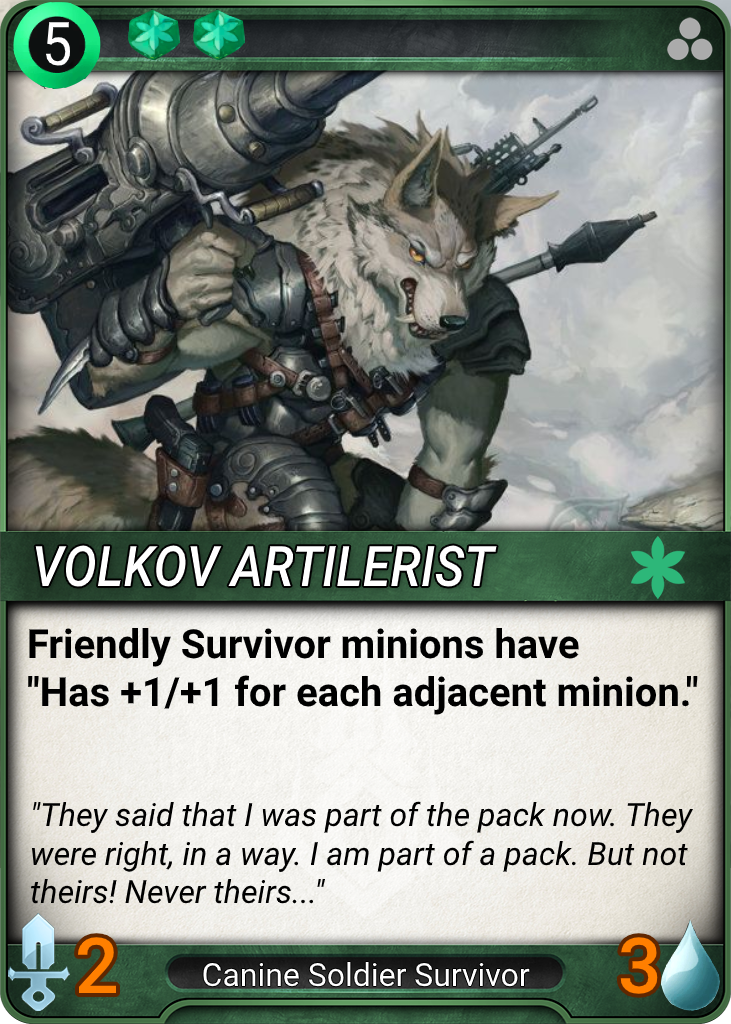
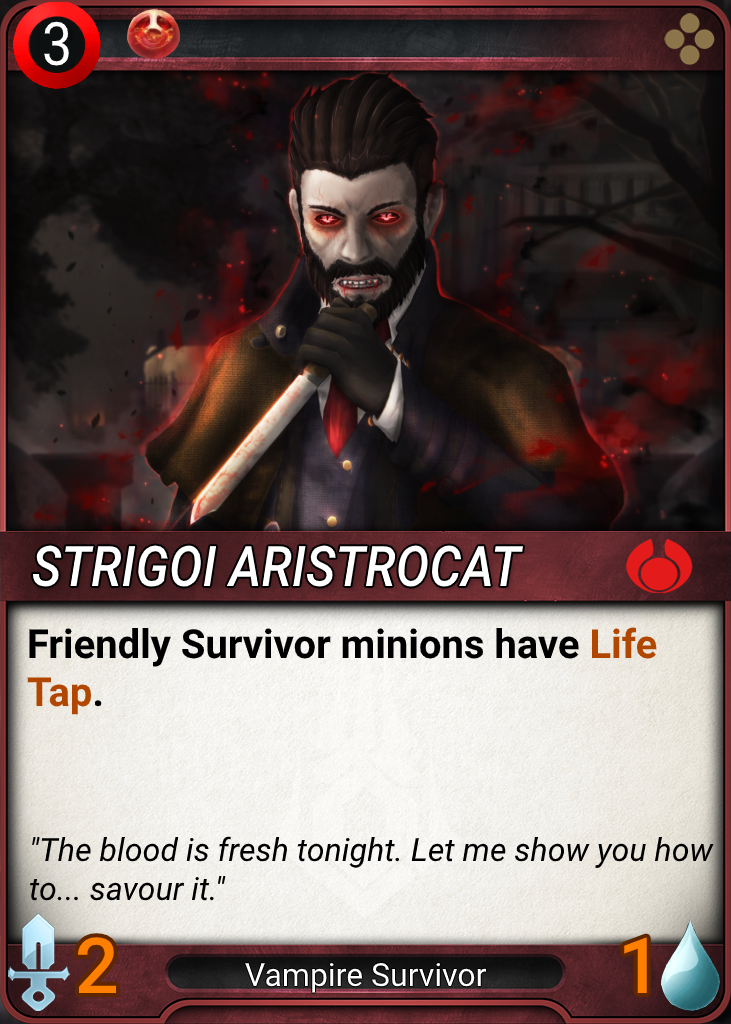
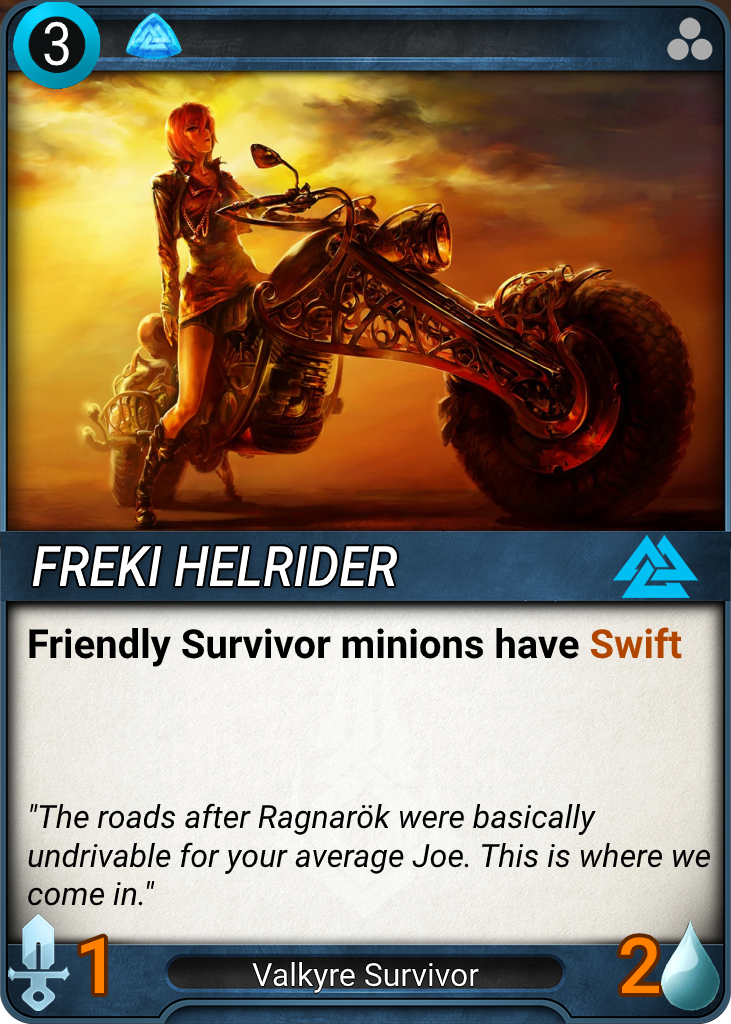
Glossary:
Life Tap - The controlling player gains life equal to the combat damage dealt.
Swift - Gets an additional move action each turn. Swift minions can move to another lane and attack in the same turn.
Invoking the Power of the Gods
Ah, Hearthstone. The game that single-handedly streamlined how digital card games should look and feel. Whatever your thoughts are on the game itself, you can’t deny it’s impact. In the Descent of Dragons expansion, Hearthstone added a new mechanic: Invoke. But to understand how it works, we must understand exactly how Hearthstone works. For those who don’t know, the game plays like a typical CCG, where you control a bunch of guys and must punch your enemy in the face until you win.
One thing that differentiates Hearthstone from other card games is the Hero Power, an ability you have permanent access to that you activate for a cost, usually 2 mana (Hi, Illidan!). The game also puts more emphasis on your hero, who isn’t just a pretty picture to help you differentiate from your opponent, but which has a fairly major impact on the game, dictating the class you play as and the cards you have access to. A few years ago, Hearthstone introduced Hero cards that you can put in your deck, like this one:
Say hello to Galakrond. Well, one of them, long story... When you play a Hero card like him, the Battlecry activates, you gain the specified amount of Armor, and your hero and Hero Power are replaced with the ones presented here. The Garakrond Hero cards are special because of the Invoke ability that comes with them. Here’s an example of an Invoke card:
Ignore the “Freeze an enemy” part, it’s not important for this discussion. When you play a card that says “Invoke Galakrond”, two things happen: Galakrond’s power activates (in this case generating a 2/1 with Rush) and the Invoke counter goes up by one, making the dragon more powerful.
“Well, that’s all nice and dandy”, I hear you say, “but there are no hero cards in Mythgard, so how are you going to cram this mechanic into the game?”. Easy: with the ‘Planeswalkers’. Or, well, the minions that function as Planeswalkers. For this example, I’ll use a modified Zolea, the Unclean (the original doesn’t have Invokable), but if this mechanic ever makes its way into Mythgard, it’s probably best to use new units, since the ones in the Core set weren’t balanced around this:
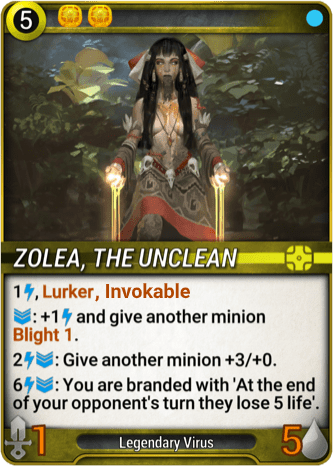
Zolea here has 3 abilities that she can activate once per turn, without using her standard action (in other words, she can still attack that turn). The first of these abilities adds energy (the little lightning symbol with a number next to it) to her total energy count, while the others need to consume the specified energy in order to activate.
Here’s how I propose Invoke to work: when you play an Invoke card, that card activates the first ability of one of these minions, at the same time increasing said minion’s energy total. So, if I were to play 2 cards that each Invoke once before I play Zolea, when she comes into play she has 3 energy instead of the default 1.
And, unlike Hearthstone, where Invoke is limited to one specific hero even if you have multiple in your deck, Mythgard has the infrastructure to allow for multiple such cards. Just give some ‘Planeswalkers’ an ‘Invokable’ keyword and, when you play a card with Invoke, you choose which effect triggers and which minion gets the energy as a result. Here’s an example of a card:
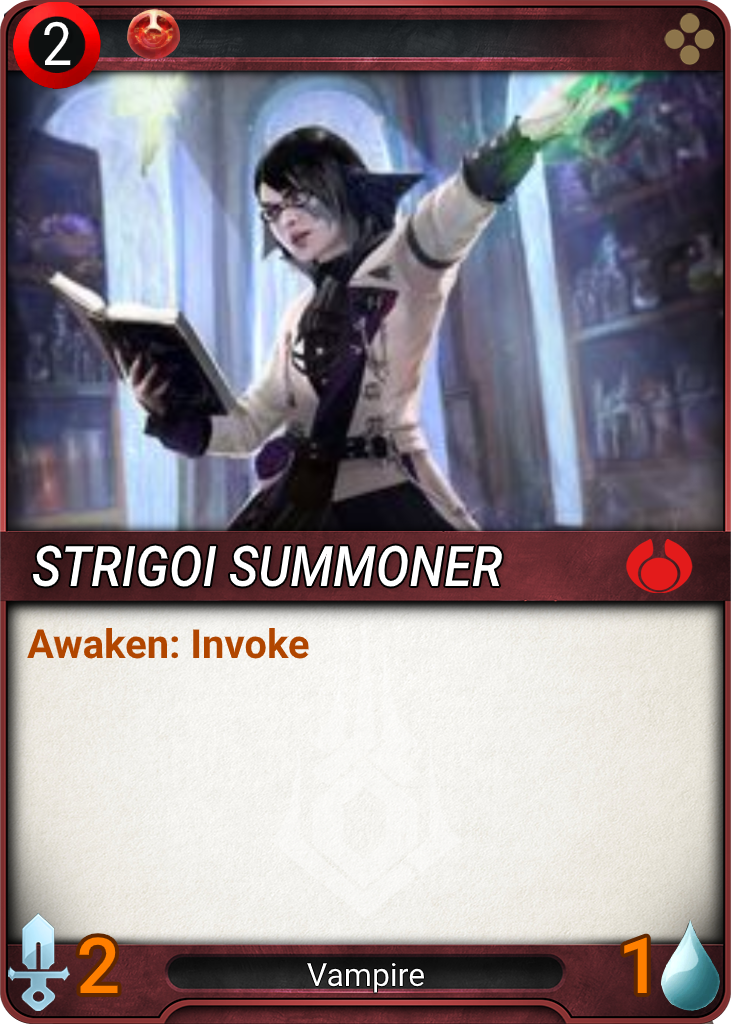
When you play Strigoi Summoner, you are presented with a list of cards you can Invoke. Those cards can be in your deck, your hand, the board, even in your graveyard. Once Zolea is selected, the action that adds energy triggers, increasing her energy counter.
There’s another gameplay option: you can have minions with abilities that need energy to activate, but that have no energy of their own. Instead, they have to use energy from one of the Invokable minions. In the example I’ve used so far, if I get Zolea’s energy to 5 via Invoke cards, and then play a card with an ability that requires 3 energy to activate, her total energy would go down to 2 afterwards. Here’s an example of such a card:
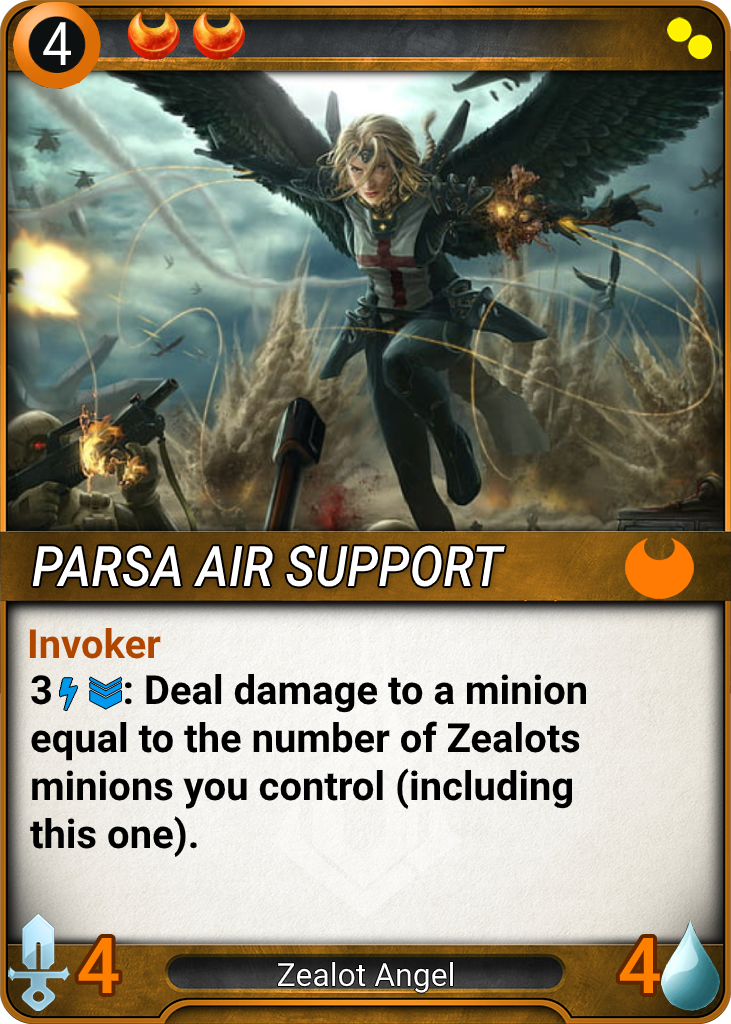
Finally, there’s the problem of acquisition. Most of those Invokable minions would more than likely be Mythic rarity, and opening a bunch of Invokers with nothing to Invoke would feel really bad. The way Hearthstone solved this problem is by giving away all versions of Galakrond for free to all players, and I feel that would work out well enough in Mythgard.
Glossary:
Lurker - Enemies must attack other blocking minions before a Lurker.
Blight X - Minions with Blight get -X/-X at the start of their turn.
Awaken - An ability that triggers when entering play.
Invoke/Invoker/Invokable - The thing you just read about, come on!
The Depths of Your Deck
Recently, Riot Games, known primarily for League of Legends, recently released their first CCG in the form of Legends of Runeterra (LoR). The game is fairly atypical in it’s gameplay, since turns are taken at the same time, with players playing one card at a time. One of my favourite mechanics from that game is Deep. Despite its name, it’s quite simple: once you go below 15 cards in your deck, minions with Deep have +3/+3. Of note is the fact that even if you somehow manage to get back to more than 15 cards, you’re still considered Deep. Here’s an example of a minion with Deep:
Now, Mythgard is mechanically more complex than LoR, so the mechanic can be expanded upon. First of all, I’d make it so that you’re ‘Deep’ when you have 20 cards left since the Burn mechanic ensures that it’s harder to get rid of cards in your deck (if you account for burnt cards, a deck practically has between 45 and 50 cards). Then, I wouldn’t limit the effect to a simple +3/+3, but instead have something along the lines of “If you’re Deep, do X”. I want to keep the fact that you don’t go out of Deep if shuffle cards into your deck, as well as the ‘depth of the ocean’ theme, since there’s a lot of sea monsters in mythology (and Triassic Kraken is feeling lonely as the only Mollusk in the game), but that’s not necessary.
Here’s my implementation of Deep:
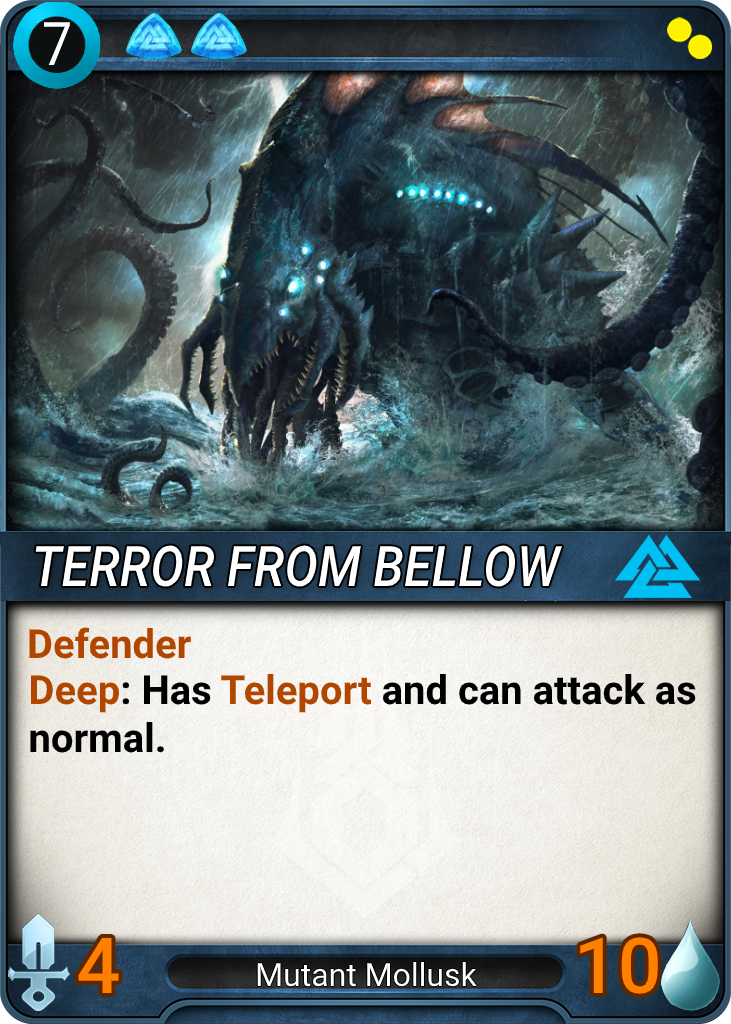
Glossary:
Defender - Cannot attack. Enemies must attack a Defender before other blocking minions.
Teleport - Can move to any lane.
I pledge Allegiance to This Promising CCG
Ah, The Elder Scrolls Legends. Such a promising game, stifled by poor marketing. Hope one day you do like the Dragonborn after getting clubbed by a giant, and respawn. The game was pretty much a typical CCG, but had a number of very promising mechanics that set it apart from others, like a dual-lane system, and the Runes, which were a very nice catch-up mechanic.
One of the mechanics implemented early in the game was that of ‘Allegiance’. The mechanic is not named at all in TESL, this is the name I borrowed from Legends of Runeterra, but they work the same: when you play a card with Allegiance, if the top card of your deck is the same color, you gain a bonus effect. Here’s an example from TESL:
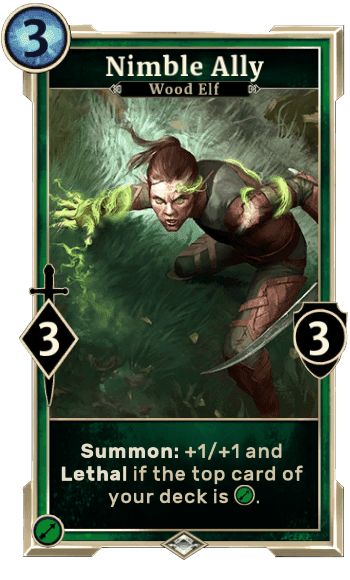
Now, these kinds of cards have a pretty glaring issue. If the top card in your deck doesn’t match, you’ve just played a sub-par card. However, Mythgard has a pretty nice keyword that synergizes with this one: Divination. When you play a card with Divination X, you look at the top X cards in your deck, choose one to put on top, and shuffle the rest into your deck. If you’re familiar with MTG, it’s a simplified version of Scry. With Divination, you can choose to put the card you want on top, and then play an Allegiance card as a follow-up to guarantee the effect. Yes, there’s a chance it whiffs, but it should increase the consistency of such a deck dramatically. Here’s a Divination card from the game, and my example of an Allegiance card:
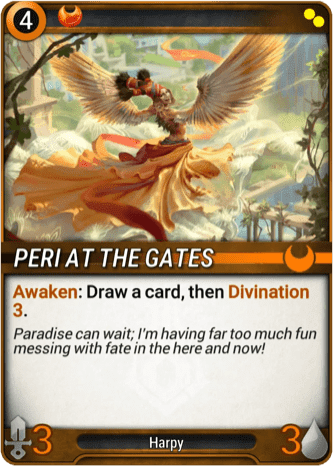
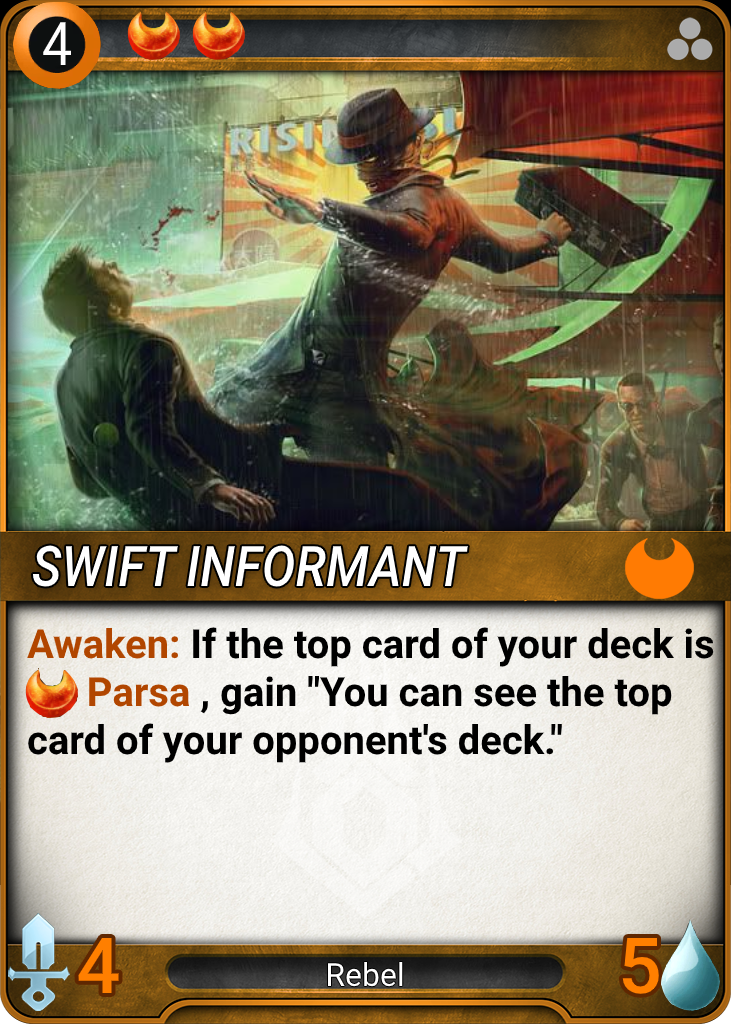
Glossary:
Awaken - An ability that triggers when entering play.
Divination X - Look at the top X cards in your deck. Choose one to put on top; shuffle the rest into your deck bellow it.
The Path to greatness
Finally, I want to end on something that is possible only in Mythgard. This isn’t a mechanic, per se, but rather a concept that I want to see implemented in the game: Path-specific cards. Yeah, remember Paths? Those passive abilities that I mentioned at the beginning without going in-depth about what they are? Yeah, I’m dedicating a whole section to them. There are quite a few things you can do here, like Dwarves that augment your Forgelings from Fires of Creation, or creatures that gain abilities while it’s Night on Disk of Circadia. However, the card I’m going to discuss is a kind of a spoiler for the story of the game. It’s nothing major, you should figure it out yourself in the first few minutes of the game if you’re at least tangentially familiar with Greek myths, but, if you’d rather go in blind, skip to the conclusion.
Let’s talk about Percy. She’s our main character throughout the story mode of the game and, as you know if you’ve made it past Chapter 2, she’s the goddess Persephone (I’ll call her by her short name cuz’ I’m lazy). Now, according to some myths, Percy would spend half the year, Spring and Summer, with her mother, Demeter, and the other half, Fall and Winter, with her husband, Hades. See where I’m going with this?
The Path Turn of Seasons has 4 effects that cycle each turn, in a predetermined order, which are named after the 4 seasons. This is the perfect set-up for Percy, who has two different effects based on what season it is:
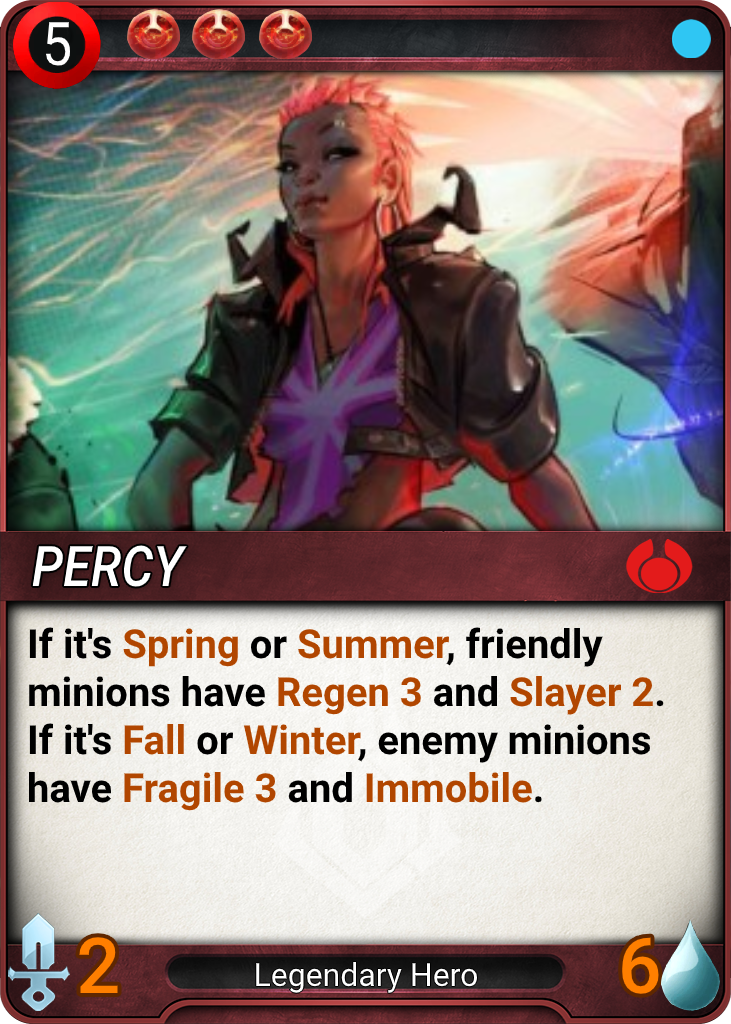
Glossary:
Regen X - At the end of it's turn, restore X health.
Slayer X - Deals X extra damage to minions in combat if the minion with Slayer has more than 0 strenght.
Fragile X - Increases the damage a minion takes by X.
Immobile - Cannot move voluntarily.
Spring, Summer, Fall, Winter - They indicate the current season of Turn of Seasons, not actually in the game.
End Turn
Wow, you made it all the way here? I’m honored! Thank you for taking the time to read my ramblings, I hope you found them entertaining. And thank you to Flux for allowing me to post those ramblings in the first place.
Mythgard exits early access Friday, September 18th, on Android, iOS, Steam and supported browsers, and with it comes the Rings of Immortality expansion. You can visit the official site here, and find an up-to-date card gallery here. On the Mythgard General subforum, you’ll also find some of my guides, the screenshots are a little dated, but the information should still be relevant. Have a nice day, and see you on the battlefield!
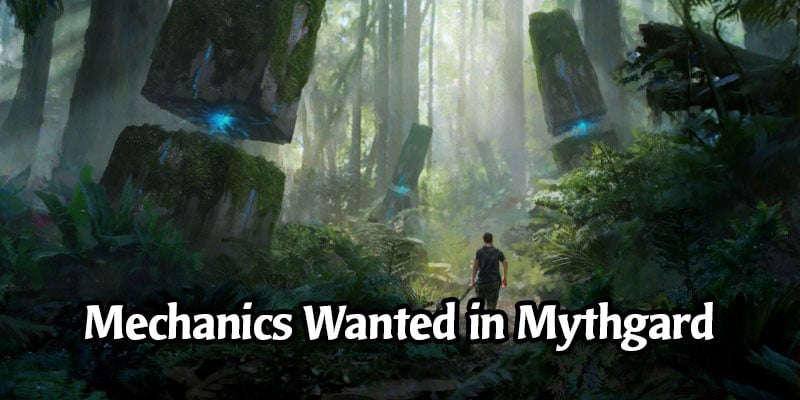
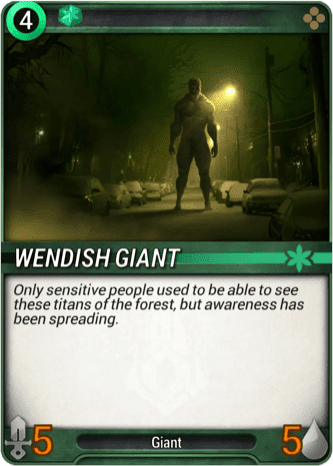
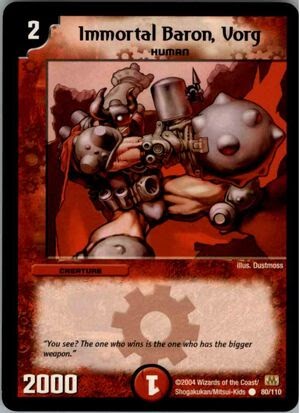
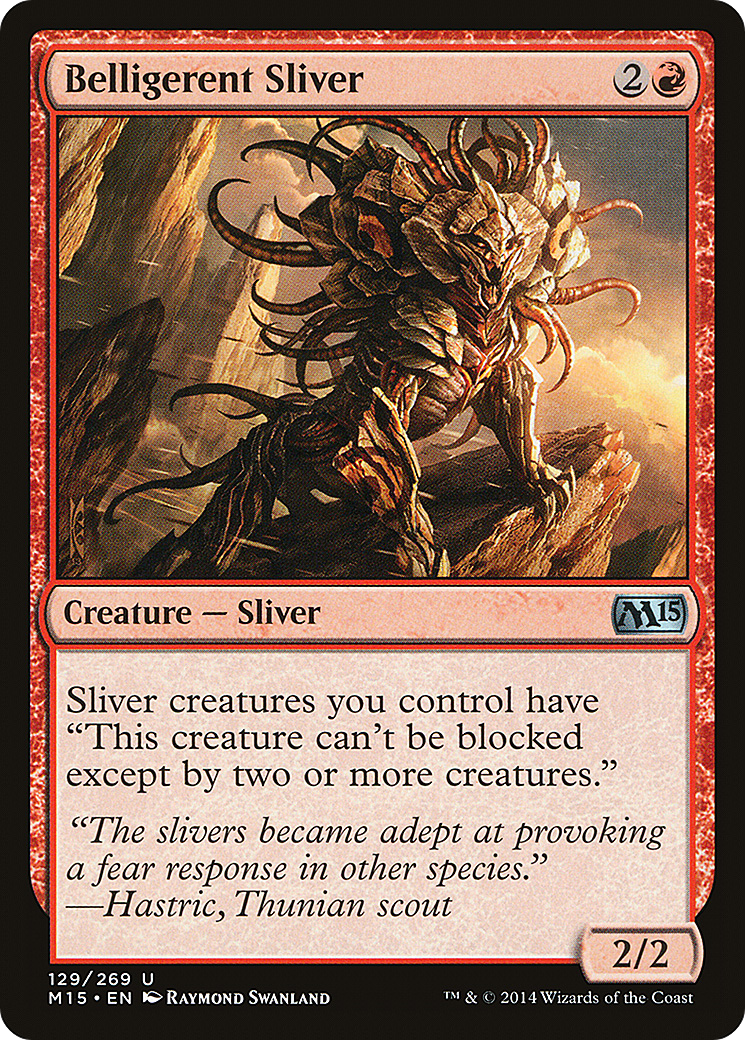
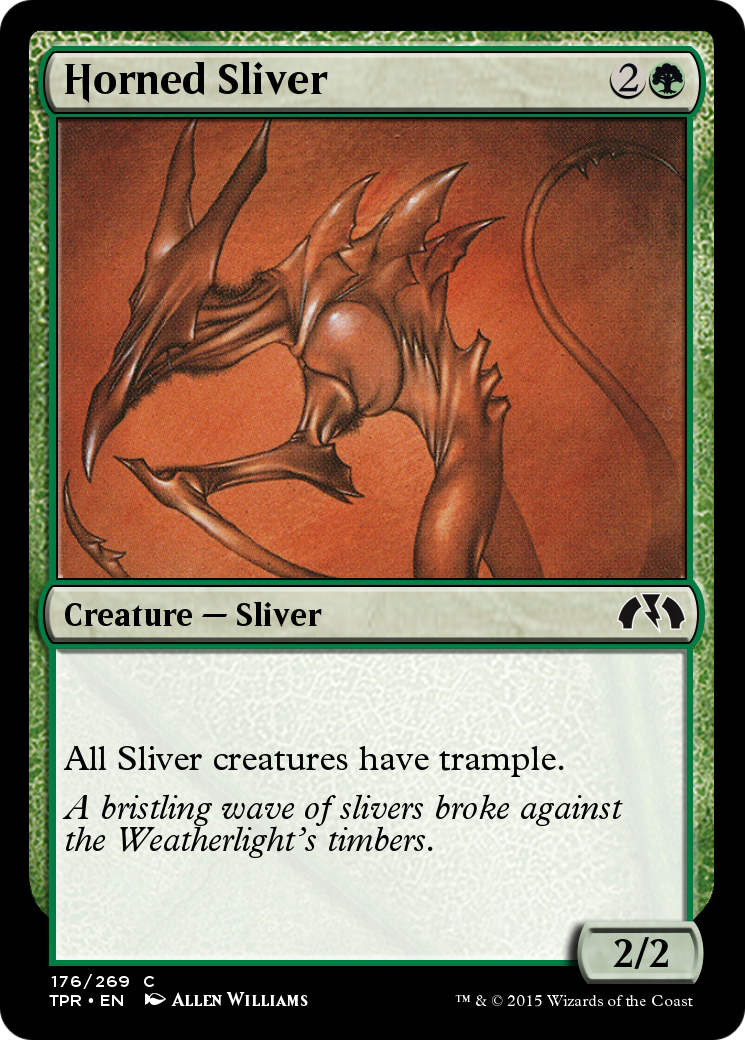
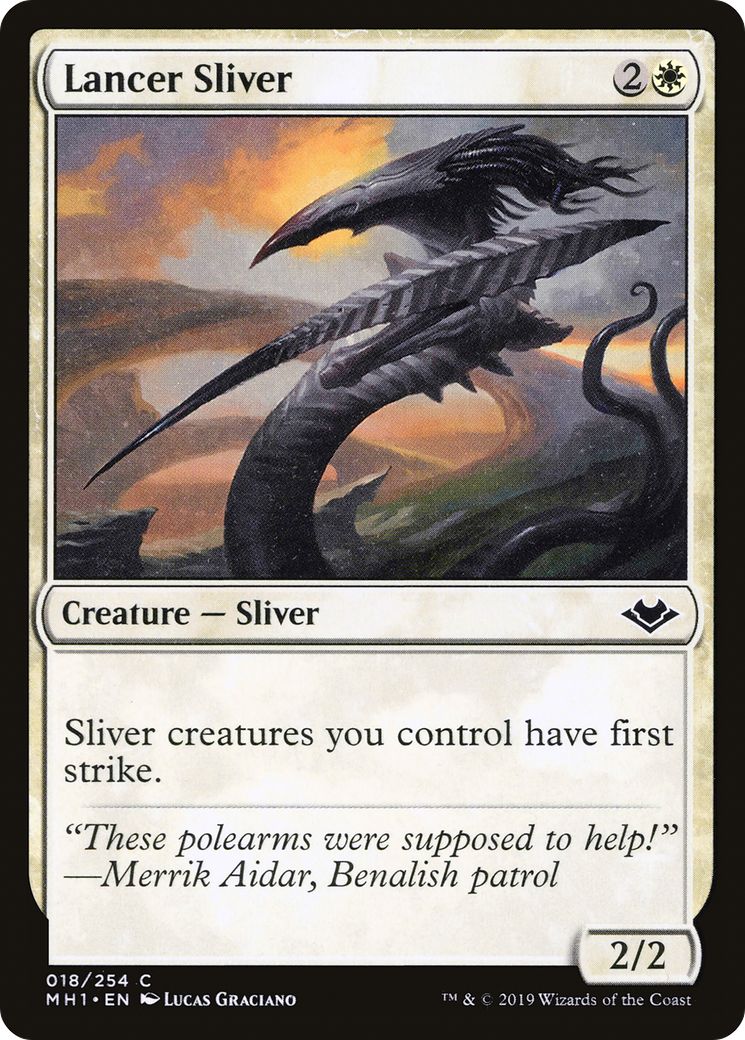
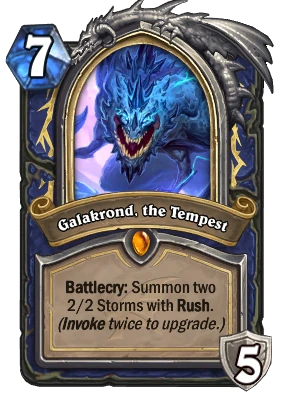
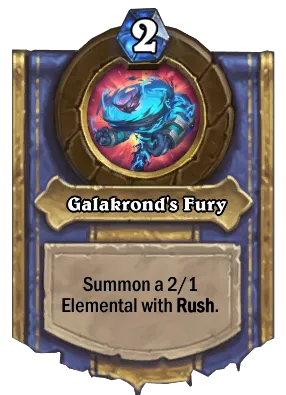
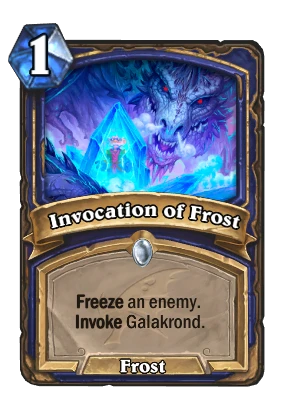
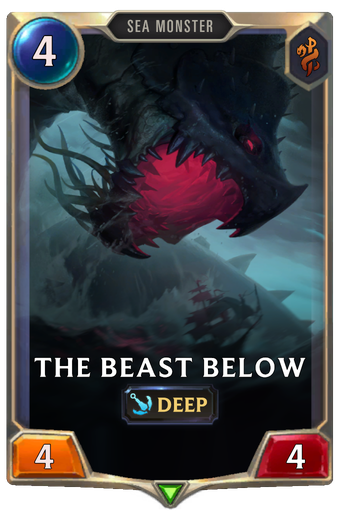
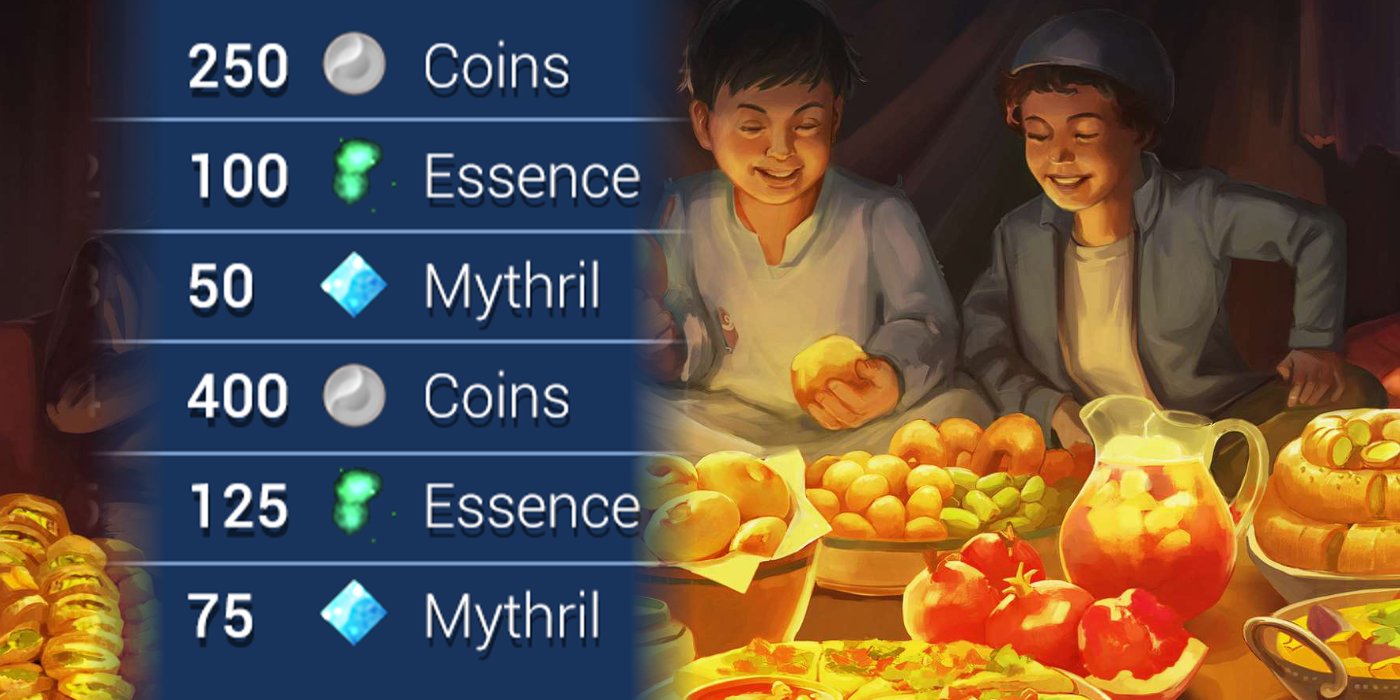
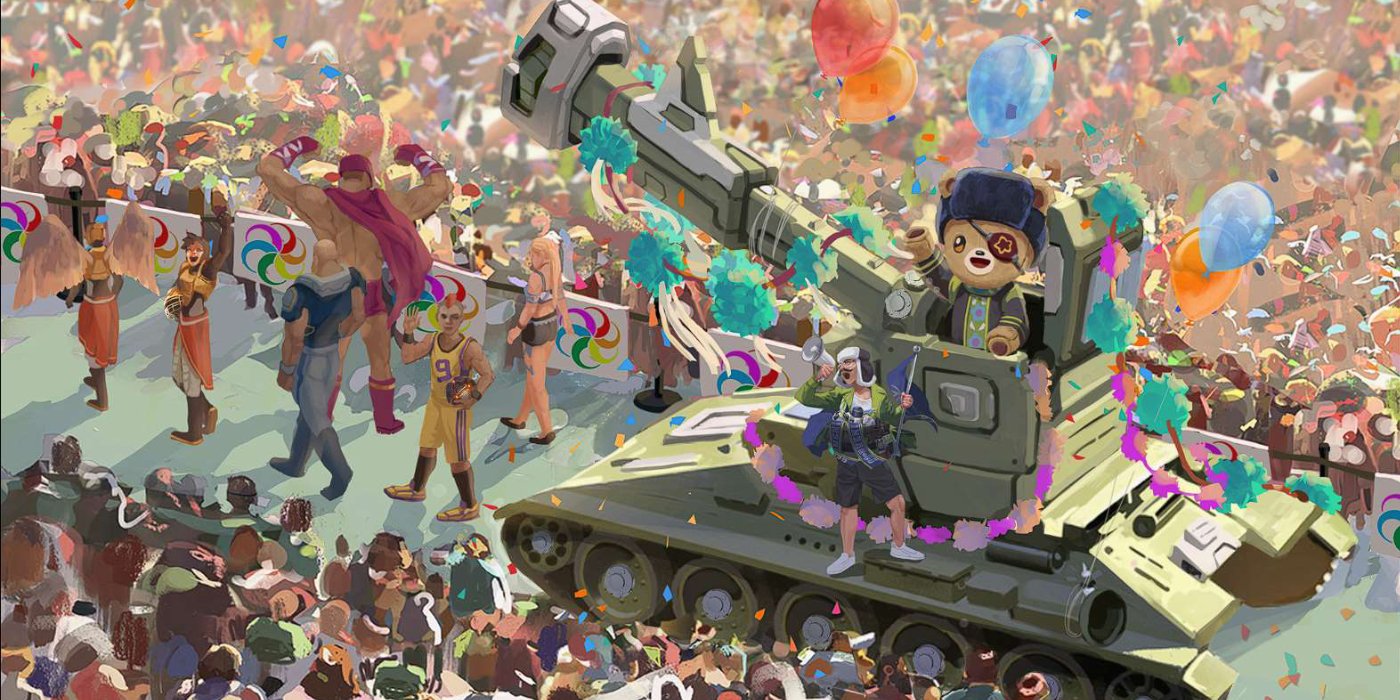
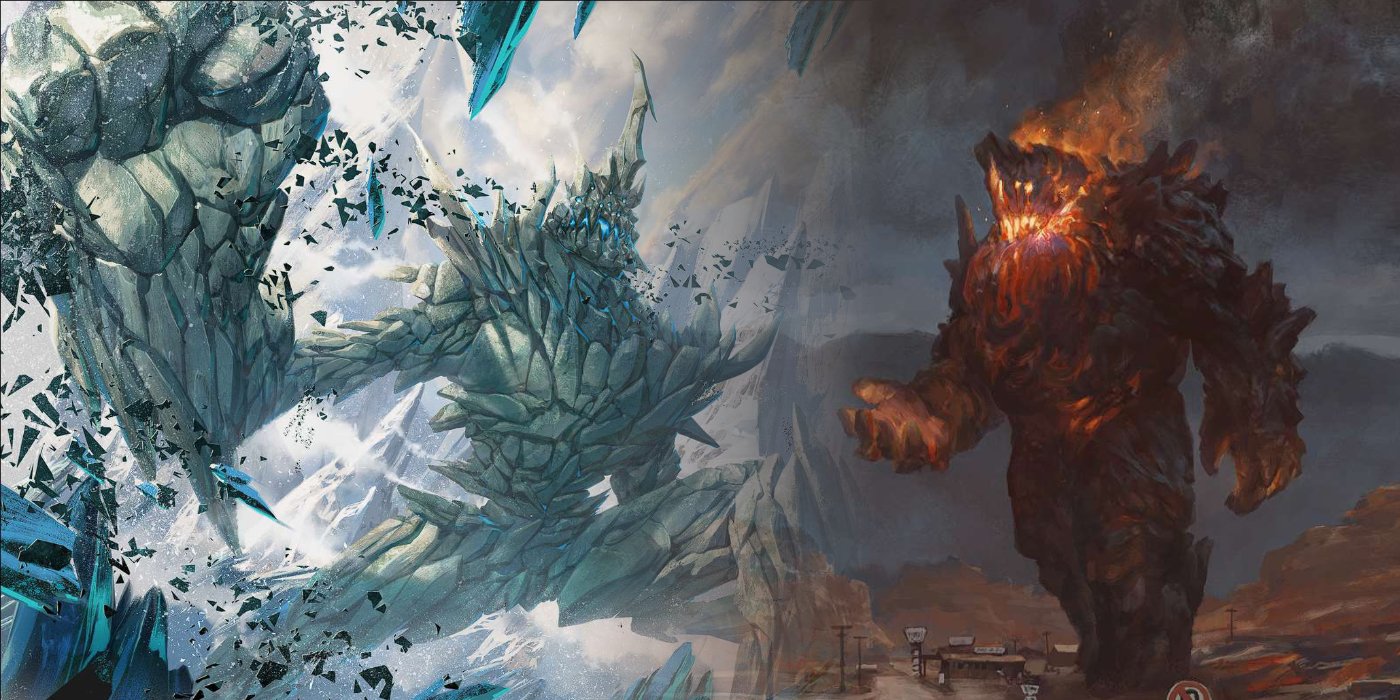
Comments
Mythgard is such a great game, I am playing it for some time and I really hope with this new upcoming expansion more people will show interest in it, this game deserves more recognition.
Iv never taken much interest in Mythgard, but reading this article, it sounds very interesting. I did see some artwork from the first expansion and it looked awesome!